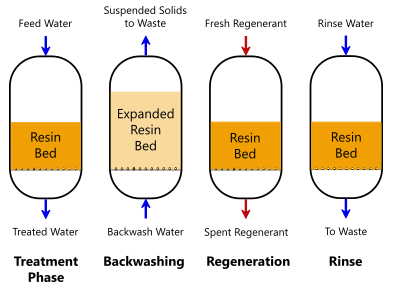PFAS Treatment in Groundwater
Ingenious PFAS Therapy Solutions for Safer Water
The boosting frequency of PFAS contamination in water materials requires a vital exam of innovative treatment options. In addition, arising bioremediation strategies offer a more lasting method to tackling PFAS challenges. pfas management.
Summary of PFAS Contamination
PFAS contamination has become a substantial ecological and public wellness concern. Per- and polyfluoroalkyl substances (PFAS) are a group of synthetic chemicals understood for their determination in the atmosphere and body, leading them to be frequently described as "permanently chemicals." These substances have been commonly made use of in various sectors, consisting of firefighting foams, water-repellent textiles, and food product packaging, largely as a result of their water- and grease-resistant homes.
The extensive use of PFAS has led to their discovery in soil, water materials, and even in the blood of humans and pets. Researches have actually linked PFAS exposure to numerous wellness concerns, including developmental results in babies, immune system dysfunction, and numerous kinds of cancer cells. Additionally, the ecological determination of these compounds complicates their degradation and elimination, increasing issues about lasting eco-friendly effects.
Regulative bodies are progressively carrying out stringent standards to keep an eye on and reduce PFAS degrees in drinking water and other ecological mediums. As awareness of PFAS contamination expands, it has actually ended up being imperative for areas and industries to look for efficient therapy options to reduce direct exposure and protect public health.
Advanced Filtering Technologies
As the urgency to resolve PFAS contamination increases, advanced purification technologies have actually emerged as a crucial element in the remediation efforts intended at removing these relentless chemicals from water sources. These modern technologies take advantage of sophisticated devices to efficiently target and capture PFAS substances, which are notoriously resistant to standard treatment techniques.
Among the most appealing approaches is the use of granular triggered carbon (GAC), which adsorbs PFAS particles due to its high surface and permeable structure. This technique has actually been widely carried out in both municipal and industrial setups, demonstrating considerable decreases in PFAS focus. Additionally, ion exchange resins have gotten grip, specifically designed to precisely bind PFAS ions from water, hence promoting their elimination.
Membrane filtering innovations, such as reverse osmosis and nanofiltration, additionally reveal efficacy in PFAS removal by physically separating pollutants from water - pfas management. These systems can accomplish high degrees of pureness, making them ideal for alcohol consumption water applications
Chemical Treatment Developments
Many chemical therapy technologies are being discovered to effectively deal with PFAS contamination in water materials. One appealing technique includes making use of sophisticated oxidation procedures (AOPs), which use effective look at this site oxidants such as ozone, hydrogen peroxide, or chlorine dioxide incorporated with UV light to damage down PFAS substances right into less unsafe materials. This technique has demonstrated effectiveness in lab settings, revealing prospective for scalability in real-world applications.
Another innovative approach is the Bonuses advancement of ion-exchange materials especially made to target PFAS. These resins can uniquely adsorb PFAS compounds from water, enabling their elimination throughout treatment procedures. Current improvements have improved the performance and ability of these resins, making them a beneficial option for water therapy centers.
Furthermore, researchers are investigating making use of chemical representatives like persulfate and ferrous ions to enhance the destruction of PFAS in infected water. These agents can induce chain reaction that facilitate the failure of consistent PFAS compounds.
Arising Bioremediation Methods
Recent advancements in chemical therapy technologies have actually led the way for exploring bioremediation techniques as a viable choice for attending to PFAS contamination. Bioremediation takes advantage of the natural metabolic procedures of microbes to break down or transform toxins, making it an attractive approach for dealing with persistent pollutants like PFAS.
Arising methods in bioremediation consist of the use of genetically crafted microorganisms that can particularly target and damage down PFAS substances. These microbial pressures are being developed for their boosted deterioration capacities, increasing the effectiveness of the remediation procedure. In addition, researchers are examining the potential of plant-assisted bioremediation, where particular plant varieties may uptake and sequester PFAS from polluted soil and water.
Another promising approach is the application of bioaugmentation, which includes presenting advantageous microorganisms into infected atmospheres to enhance the deterioration of PFAS. This method can help with their website much faster remediation timelines and enhance general performance.

Regulative Frameworks and Specifications
A thorough regulatory framework is vital for properly managing PFAS contamination and making sure public wellness defense. The raising acknowledgment of per- and polyfluoroalkyl substances (PFAS) as environmental pollutants has prompted different federal and state agencies to create criteria that control their visibility in water products. The United State Environmental Security Company (EPA) has established health advisories and is pursuing setting enforceable limits for PFAS in drinking water.
State-level regulations differ significantly, with some states adopting more stringent standards than those recommended by the EPA. These guidelines commonly include maximum impurity degrees (MCLs) for particular PFAS compounds, monitoring needs, and reporting commitments for water energies. Furthermore, emerging frameworks concentrate on the remediation of contaminated sites, stressing the requirement for efficient treatment technologies.

Final Thought
In final thought, the development and execution of innovative PFAS therapy options are crucial for dealing with the pervasive problem of water contamination. Advanced purification modern technologies, chemical treatments, and emerging bioremediation strategies collectively present a complex strategy to successfully decrease and degrade PFAS degrees. As regulative structures remain to evolve, incorporating these innovations will certainly be vital to secure public wellness and recover the stability of polluted water sources, inevitably adding to a cleaner and more secure environment.